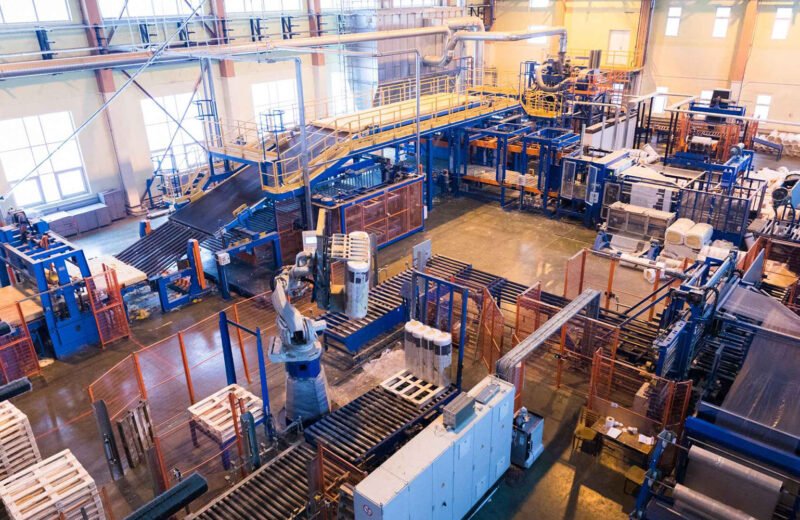Modern automotive interiors are evolving at a tremendously fast pace, moving past the mechanical dials and becoming fully electronic. While there is a sense of nostalgia in interacting with a vehicle “the old-fashioned way” by pressing buttons to enable certain features, the electronic revolution is bringing larger displays with touch-sensing capabilities to activate these features, similar to a tablet used in consumer electronics applications. This is naturally dependent on driver preference, whether they prefer more dials, but from an automotive designer’s perspective, further interaction with the vehicle is now possible by using an electronic display rather than creating more space for additional buttons in the vehicle. A haptic feedback system adds a sense of touch to these touch-sensitive displays as a compromise.
There is a growing emphasis on having other passengers control the vehicle along with the driver and removing the need for the driver to set key features, limiting distractions while driving. The latter point is a key objective for automotive manufacturers, i.e., displays need to be present and informative but not overwhelmingly distractive. They need to enhance safety, not the opposite, and displays are designed for this purpose.
However, consumers are accustomed to looking at the end result and admiring the integration of all the electronics within the vehicle, creating a more immersive and seamless driving experience. As a result, the key attributes are noticed, such as the design of the display, its curvature, brightness, and type of technology, i.e., OLED or LCD, when, in reality, there is a lot more that goes into building the display and assembling the entire unit.
IDTechEx’s report, “Automotive Displays 2024-2034: Technologies, Players, Opportunities”, understands this perspective and delivers a more holistic view of the entire display. It provides a comprehensive coverage of this display sector, not only looking into the display technologies and type of displays but also the different components that make up a display. It understands the importance of adhesives, cover glass, driver integrated circuits (ICs), and diffusers (LCD displays). This report also covers key trends, market analysis, opportunities, and granular 10-year forecasts for display volume (number of displays) and value (US$), segmenting the industry by display type and technology.
Relating to the example above, modern touch-sensitive displays are paired with an additional haptic feedback system to provide users with that sensing experience, much like pressing a button. These are enabled by piezo actuator films that provide this touching response, as well as automotive-specific driver ICs that pair all these components to enhance the driver and passenger experience. Microchip is an example of a company developing this technology and emphasizes this haptic pairing, giving some drivers the sensing capability they demand.
The increased computational power of these processors is also exploited by companies such as Synaptics. LCD technology is dominant in the automotive display sector primarily due to its cost; however, its dynamic range and image contrasts are considerably poorer than OLEDs. Synaptics supports its LCD display partners by supplying its proprietary local dimming driving technology, significantly improving LCD’s contrast ratio and likening it more to OLED’s performance. As well as notable benefits to the image quality, the current consumption is also lowered using this technology, and given the rise in electric vehicles, this feature is gaining even more relevance over time.
The driver IC behind the automotive display is responsible for many key interactions that passengers and drivers have with the vehicle that are taken for granted. While not focusing on these extensively, the IDTechEx report covers relevant aspects these components play in modern display technology.
The cover glass is another fundamental component when putting together an automotive display. The challenge lies in designing an equally resilient and durable unit while fully transparent with minimal reflectance and glare. Cover glass in a vehicle is not only protecting the display but also the passengers on board. Glass must pass stringent automotive regulations, including the rigorous headform impact test (HIT). Soda lime glass, conventionally used in bottles, drinking glasses, and windows, shatters in a manner that would be exceptionally dangerous for vehicle passengers. The sharp edges that would result from an impact are one reason that makes it unsuitable for the industry (on its own). Corning Gorilla glass, for instance, shatters in a different manner and is designed specifically for the automotive sector. It is resilient and transparent, a balance that is very difficult to strike. In addition, all components used in this space need to pass very rigorous testing to ensure they can operate under harsh environments.
The complexity of the cover glass revealed another important industry, the glass molding space. There are companies that are capable of molding glass in the automotive space. The unique chemical composition and properties of glass used in vehicles make the molding of glass a very complex process. Original equipment manufacturers (OEMs) have certain design requirements that need to be met, and molding the glass to these specifications without damaging its physical and chemical integrity is a significant challenge often overlooked.
Finally, another sector fundamental to the smooth operation of displays in the automotive space is the adhesives. Lohmann, Dow, DELO, and 3M, for example, are all supplying the latest adhesive innovations and ensuring all the components are secure in the harshest of environments while enabling the display technology to perform under optimal conditions. Adhesives must operate under wide temperature ranges, high vibrations, and varying moisture conditions, among other ambient situations. The complexity of manufacturing suitable adhesives that must enhance the performance of the display technology and not hinder it is very large and is a challenge that must be considered.
While the IDTechEx report still focuses on display technologies and display types, it also acknowledges the complexity and importance of the components that bring these displays together and enable their optimal performance.
For more details on the automotive display market, please see the IDTechEx market research report, “Automotive Displays 2024-2034: Technologies, Players, Opportunities”. For more information on this report, please visit www.IDTechEx.com/AutoDisplays, or for the full portfolio of research available from IDTechEx please visit www.IDTechEx.com/Research.


















